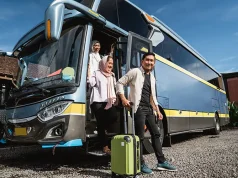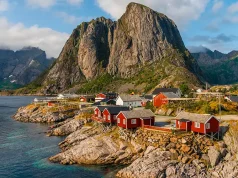The Pekoe Trail is a 22-day, 200-mile network of hiking trails through the Sri Lankan tea country funded by the EU and USAID
The aim is to develop, maintain and curate a trail that is going to promote the diverse cultural and natural heritage of the Sri Lankan Tea Country and encourage its preservation ultimately benefiting local communities. The trail provides a world-class experience for both long distance hikers, runners and those who simply want to walk for a few days in the Tea Country as part of their travels around Sri Lanka.
The Trail starts in Kandy, Sri Lanka’s spiritual heart. The trail then crosses over 7 valleys, across the eastern hills, and over some of Sri Lanka’s most dramatic and challenging mountain terrain.
The trail can be done in any direction, with a multitude of entry and exit points. It has been purposefully designed to connect important towns and villages, train stations and interesting sites, so that walkers can easily enter and exit the trail.
History: Pilgrims and planters.
People have been walking on these hills for millennia.
Perhaps the first reference of a trail of significance in the hills of Sri Lanka relates to the Sri Pada pilgrimage. In the 5th century chronicle, the Mahawamsa, it is stated that the Buddha visited the “mountain peak”, now known as Adam’s Peak. Buddhist tradition holds that a “sacred footprint” rock formation near the summit is the footprint of the Buddha. Marco Polo noted the importance of Adam’s Peak in his travel of 1298 and the Arab traveller, Ibn Battuta, climbed to its summit in 1344.
Yet, the overwhelming majority of the trails you will be walking on are paths developed by tea plantation companies. The story of these tea trails begins over two hundred years ago, when the country was still a British colony. In 1824 a tea plant was brought to Ceylon by the British from China and was planted in the Royal Botanical Gardens in Peradeniya for non-commercial purposes. As the tea industry grew British planters developed and expanded the network of trails within their own estates and between the various settlements across the tea country creating this vast network of trails and paths.
The physical network of trails replicates the woven fabric of its stories: those of pilgrims and planters, naturalists, birders, gardeners and landed gentry. They take you through pilgrimage sites, past great lakes and spectacular waterfalls, up stunning peaks and deep into bird and wildlife-rich rain forest. You will see the great tea industry at work – the tea factories, tea sheds and warehouses – step back in time at the old planters’ clubs and visit the lovely plantation homesteads.
Trail routing and design principles
The Trail is a social enterprise. The trail was conceived and designed to increase the flow of responsible travellers to some of the most remote communities in the tea country, brining prosperity and opportunity to local people. This is the reason why stage starts or ends, where possible, in a local village or a local town. Local towns and villages are hives of commerce and culture. Here hikers can rest and replenish by buying food and basic necessities from local vendors. One of the goals of the trail is to be an economic corridor where tourist dollars reach as many people as possible. This is both a guiding principle of the trail and an established standard of sustainable travel.
The Tea Country Trail is foremost a heritage trail. We want the experience to be Immersive, insightful and inclusive. One of the key goals of the project is to protect and preserve the heritage of the Sri Lankan Tea Country, both the physical heritage and the cultural heritage. Hence the trail focuses on routing to expose the walker to the Tea Industry’s culture and heritage; the tea factories, the warehouses and sheds, the magnificent tea plantation bungalows, the planters clubs, the old post offices, the tea trails and tea roads, the old grand hotels and the train line.
The route has been designed as a thread that connects as many of the most interesting and important landmarks of the Sri Lankan Tea Country, from Adam’s Peak to the Addisham Bungalow, from Lipton Seat to the Nine Arch Bridge. The idea was to give the trail variety, to promote the best of the region, to create interesting milestones and to make each day as exciting and fun as possible.
Each day has been planned to cover an average of between 8 and 16 km. The idea is for the trail to be as inclusive as possible. There is something for everyone, for young and young at heart, from the experienced hiker to those who want a fun day out. The guiding principle has been to try to keep walking times each day to between 4 and 6 hours, but not more. That said, if you are an experienced hiker and want to do more km, that is also entirely possible.
The trail can be done in any direction. You choose whether you want to walk west to east or vice versa.
When to go
Hiking in Sri Lanka is entirely possible all year round. Sri Lanka is affected by two South-East Asian rainy seasons. The driest months of the year in the hills and in Sri Lanka in general are: December, January, February, March. During these months you can expect less rainfall than the rest of the year. Daily average temperatures are also cooler in November, December, January and February. That said many seasoned hikers in Sri Lanka prefer June, July and August when clouds from the west gently traverse the hills blown by the monsoon winds and the sun shines through the gaps producing on the tea fields below infinite gradients of green.





